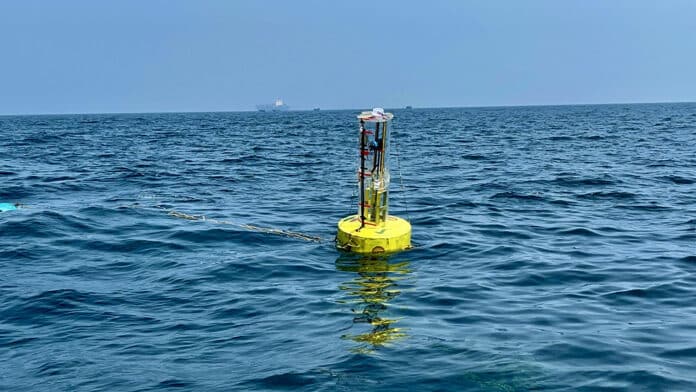The waves of the oceans represent a deposit of renewable energy that, for the most part, is still unexploited today. This is not for lack of effort, as for more than two hundred years, inventors, researchers, and engineers have struggled to develop processes and systems to recover the energy of the waves.
In similar efforts, researchers at the Indian Institute of Technology Madras (IIT Madras) have now developed an ‘Ocean Wave Energy Converter’ that can generate electricity from sea waves. The device successfully completed the trials during the second week of November 2022.
The device, named ‘Sindhuja-I,’ has a floating buoy, a spar, and an electrical module. The buoy moves up and down as the wave moves up and down. In the present design, a balloon-like system called a ‘buoy’ has a central hole that allows a long rod called a spar to pass through it. The spar can be fixed to the seabed, and passing waves will not affect it, while the buoy will move up and down and produce relative motion between them. The relative motion gives rotation to an electric generator to produce power. The spar floats, and a mooring chain keeps the system in place.
The wave energy converter was deployed at a location about 6 km off the coast of Tuticorin, Tamil Nadu, India, at a location with a depth of 20 meters. The device is expected to generate 1MW of power from ocean waves in the next three years.
If successful, this project will help fulfill several objectives, such as the UN Ocean decade and sustainable development goals. It could help India meet its climate change-related goals of generating 500 GW of electricity by 2030 through renewable energy, according to the researchers.
The ocean wave energy converter is targeted towards remote offshore locations that require reliable electricity and communication either by supplying electric power to payloads that are integrated directly in or on the device or located in its vicinity as on the seabed and in the water column.
“India has a 7,500 km long coastline capable of producing 54 GW of power, satisfying a substantial amount of the country’s energy requirement. Seawater stores tidal, wave, and Ocean thermal energy. Among them, the harnessing of 40GW wave energy is possible in India,” said Prof. Abdus Samad, Department of Ocean Engineering, IIT Madras.
“Even single devices in different locations along the Indian coastline can generate large quantities of clean power. We are also contemplating placing multiple devices in an array configuration for maximum wave power extraction from the location. Our vision is to make India sustainable by tapping the marine energy and net zero carbon emission to mitigate climate impact.”
The project received funding support through the ‘Innovative Research Project’ of IIT Madras, TBI-KIET, under the DST Nidhi-Prayas Scheme and the Australian Alumni Grant Scheme 2022 by the Department of Foreign Affairs and Trade, Australian Government. The researchers partnered with a startup, Virya Paramita Energy (VPE), and Motilal Nehru National Institute of Technology (MNNIT) Allahabad for this test. The electrical storage system was designed by the GKC Institute of Engineering and Technology and MCKV Institute of Engineering, West Bengal.
